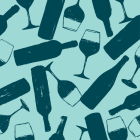Cult Wines CEO on tariff ceasefire: ‘We’re not out of the woods yet’
Cult Wines CEO Tom Gearing has welcomed the tariff ceasefire between the US and Europe, but says that producers and merchants on both sides of the Atlantic still face challenges ahead.
In a radio interview with Bloomberg, Gearing said that had the proposed 100% tariffs gone ahead, the impact would have been “catastrophic” on the global wine market. However, he noted that there are still existing tariffs in place, and that they continue to have an adverse effect on importers and producers alike.
Elsewhere in the interview, Gearing shared insight into the fine wines that investors should now be turning their attention to outside of France, and reiterated the strong advantages of wine investment as an alternative asset: “There’s a lot of history and romance around fine wine, but treat it purely as a financial asset and it brings a lot of benefits.”
Click here to listen to Gearing’s tariff ceasefire analysis, and to discover which wines are on the up in 2020.
Burgundy’s 2018 is the best vintage for past four years
The overall quality of the 2018 vintage is Burgundy’s best for the past four years, according to wine intelligence agency Wine Lister. With an index score of 886, it’s ahead of 2015’s 883 and 2016’s 879 – the prices of which have already jumped to more than £150 per bottle.
Speaking to Harpers, Wine Lister CEO Ella Lister said: “Rising prices in Burgundy are no longer a surprising factor, but it is interesting to note the difference in average price between 2018 (£125 per bottle in-bond) and 2015 – now at £149 per bottle in-bond for a very similar level of quality."
Wine Lister’s quality scores come from a basket of ‘top 50’ wines identified across a number of metrics, including critic scores from the likes of Antonio Galloni, Neal Martin and Jancis Robinson.
However, Lister did advise some caution when choosing wines from the vintage. “In practical terms, 2018 is a vintage worth backing for both reds and whites across appellations providing the producers are chosen carefully, as vineyard management and picking dates were crucial in such a warm growing season,” she said.
Italian wine prices liable to rise following 2019 production drop
Italian wine production dropped 12% in 2019 due to challenging weather conditions, according to a report from Italian national statistics institute Istat.
According to the findings, last year’s reduced figures ‘wiped out’ much of the growth recorded in 2018, where production rose by 14.3% compared to 2017.
The report reflects a difficult year for growers around Italy, who were hit by floods, storms and heatwaves. Italian agriculture group Coldiretti revealed that 2019 had witnessed 60% more extreme weather events than the previous year, including heavy rain, snow, high winds, tornadoes and hail – 2019 was also the country’s fourth warmest year since 1800.
However, the Coldiretti also noted that Italian wine exports in 2019 totalled €6.4 billion, marking a 4% rise compared to 2018. This indicates that demand remains consistently high. If this trend continues, a diminished supply is likely to see prices increase in response.
Rare wine bottles found on building site valued at £20,000
A building site in Worcestershire has yielded a surprising discovery in the form of six ‘golden’ wine bottles from the 17th century.
The bottles, thought to date back to around 1665, have a gold appearance thanks to a patina, which forms on glass after it has spent time underground. It’s thought that the bottles could have been owned by one of several prominent barons, earls or dukes of the time, including George Villiers, the 1st Duke of Buckingham and a favourite of King James I.
The bottles will sold in sales by specialist auctioneer BBR in February, April and June, and are expected to fetch a combined total of £20,000.
Speaking to Antiques Trade Gazette, Alan Blakeman of BBR said: “The JCB was digging a trench for footings. As the first ‘piece’ shone in the sunshine the workman stopped to see what it was. He pulled it out and the others were there to just pluck from the clay. It’s incredible they didn’t damage them.”





